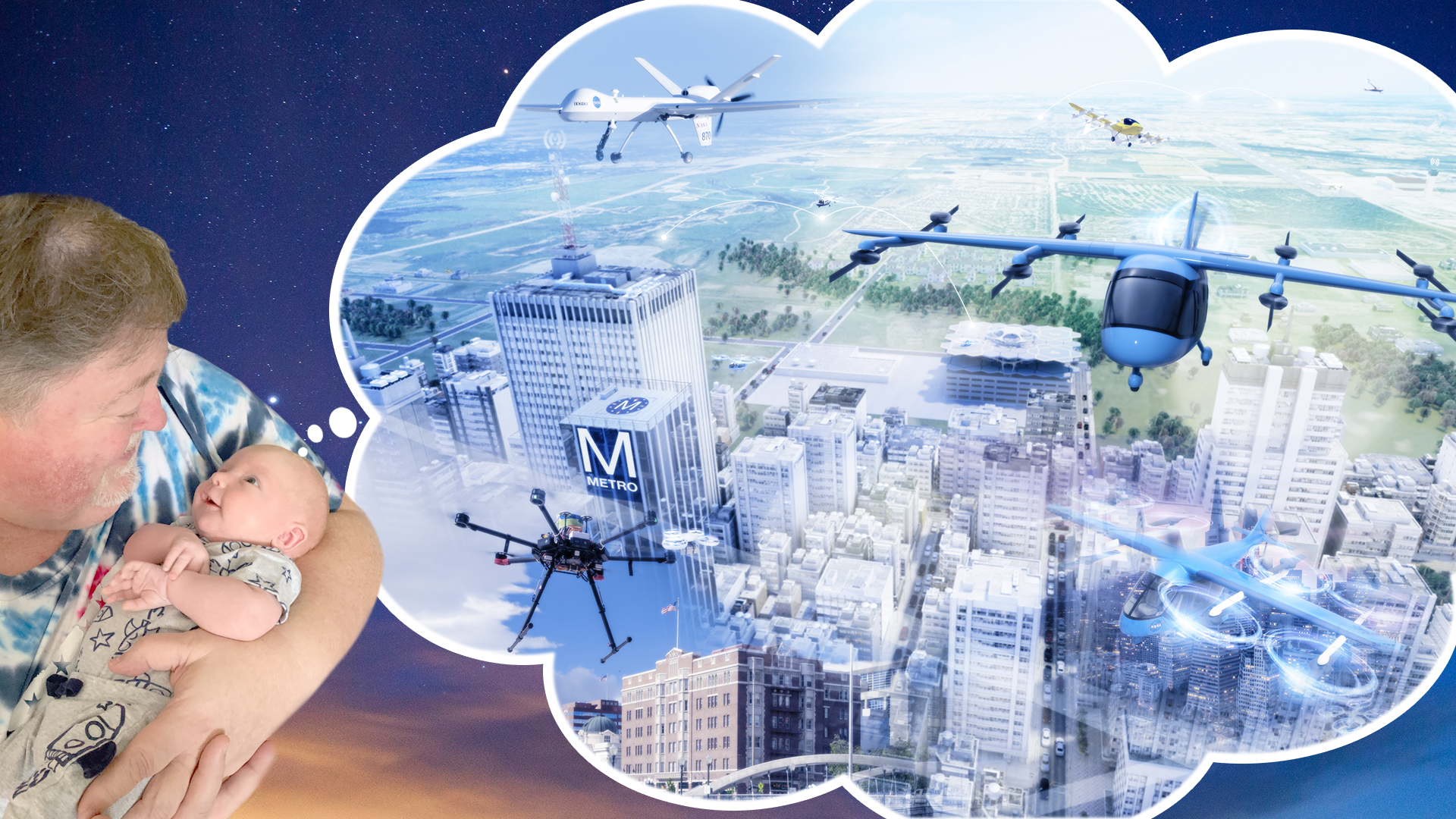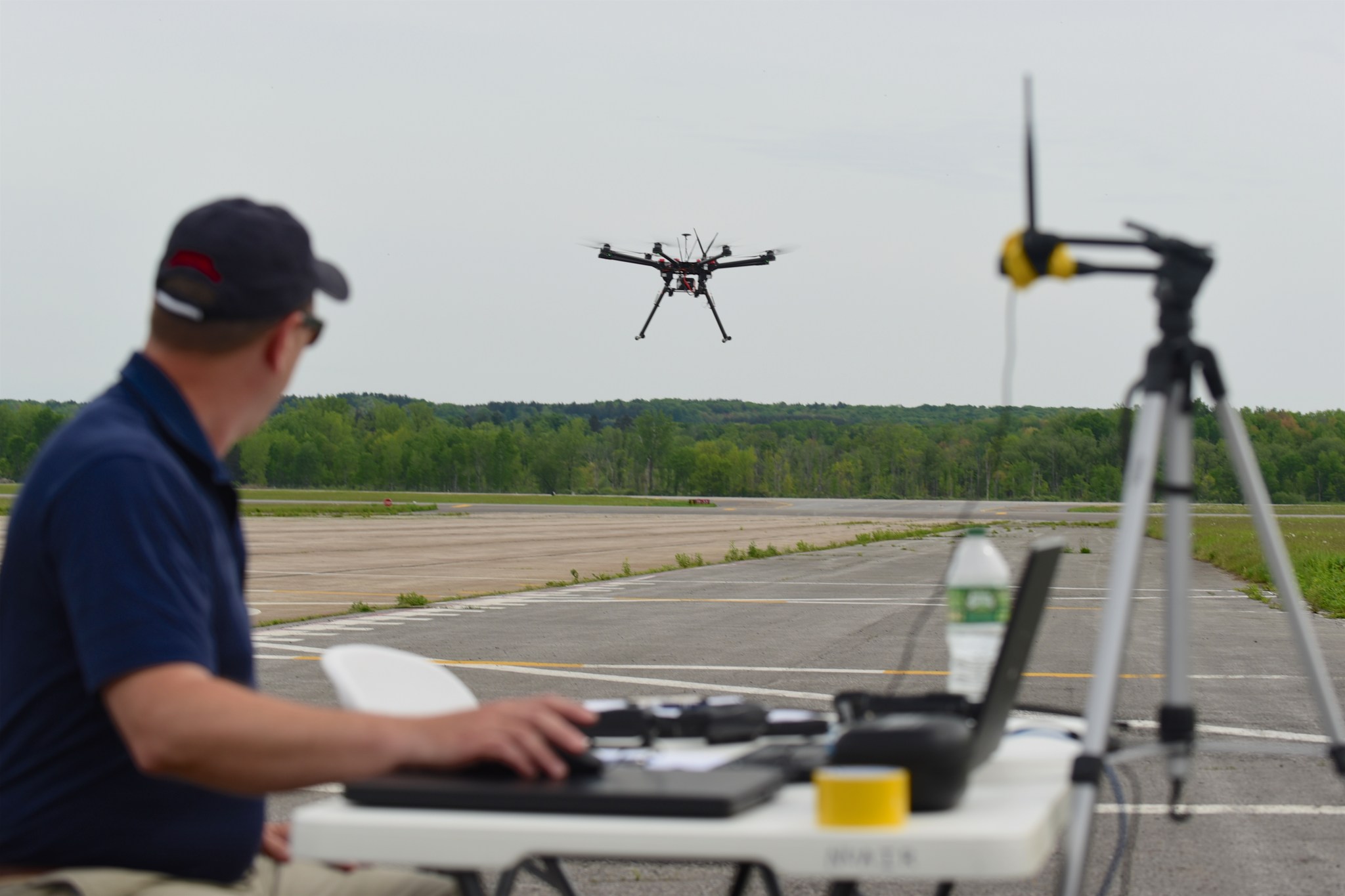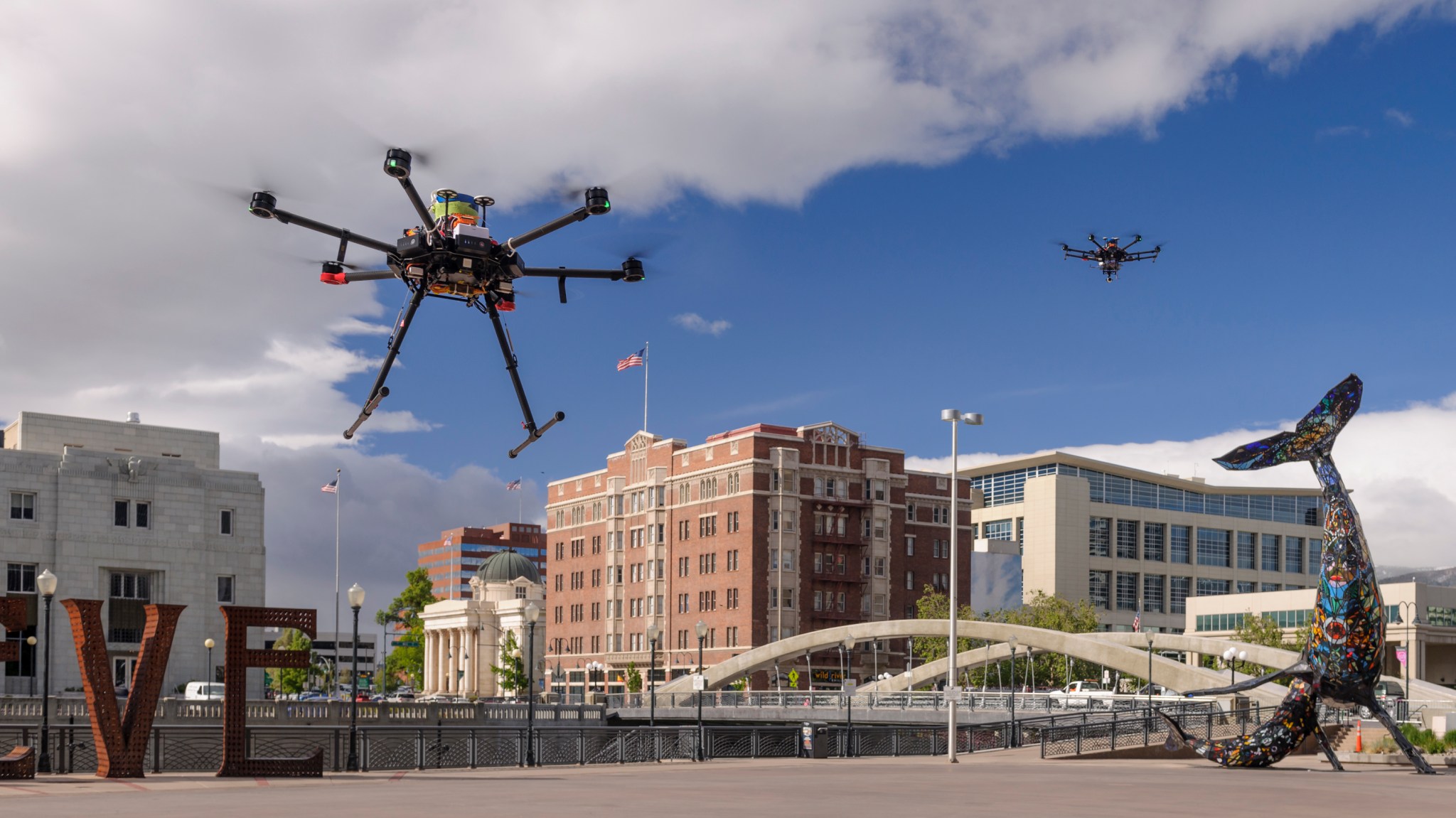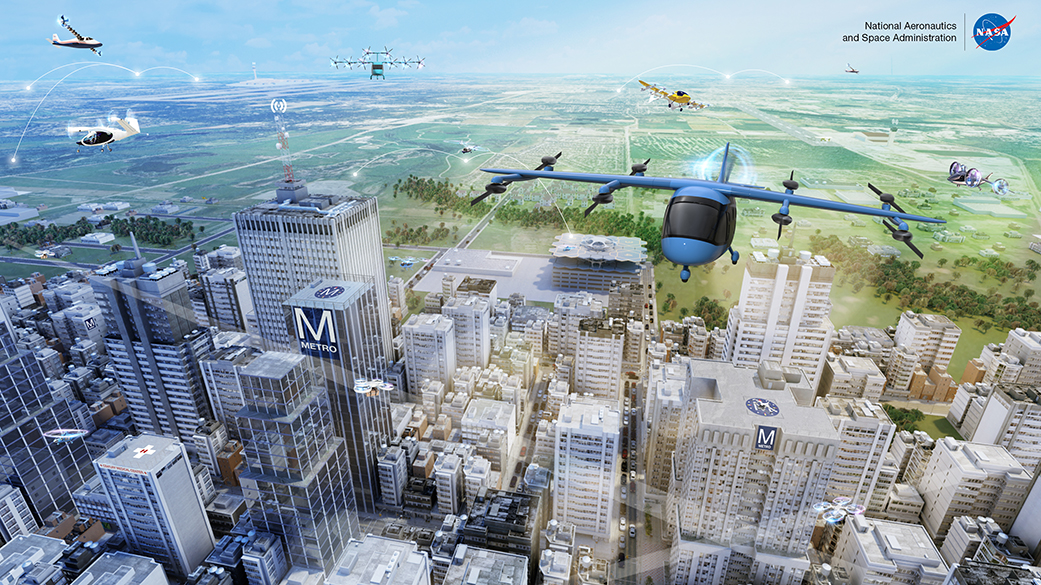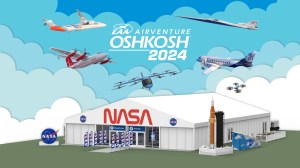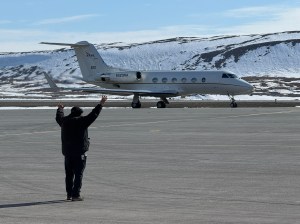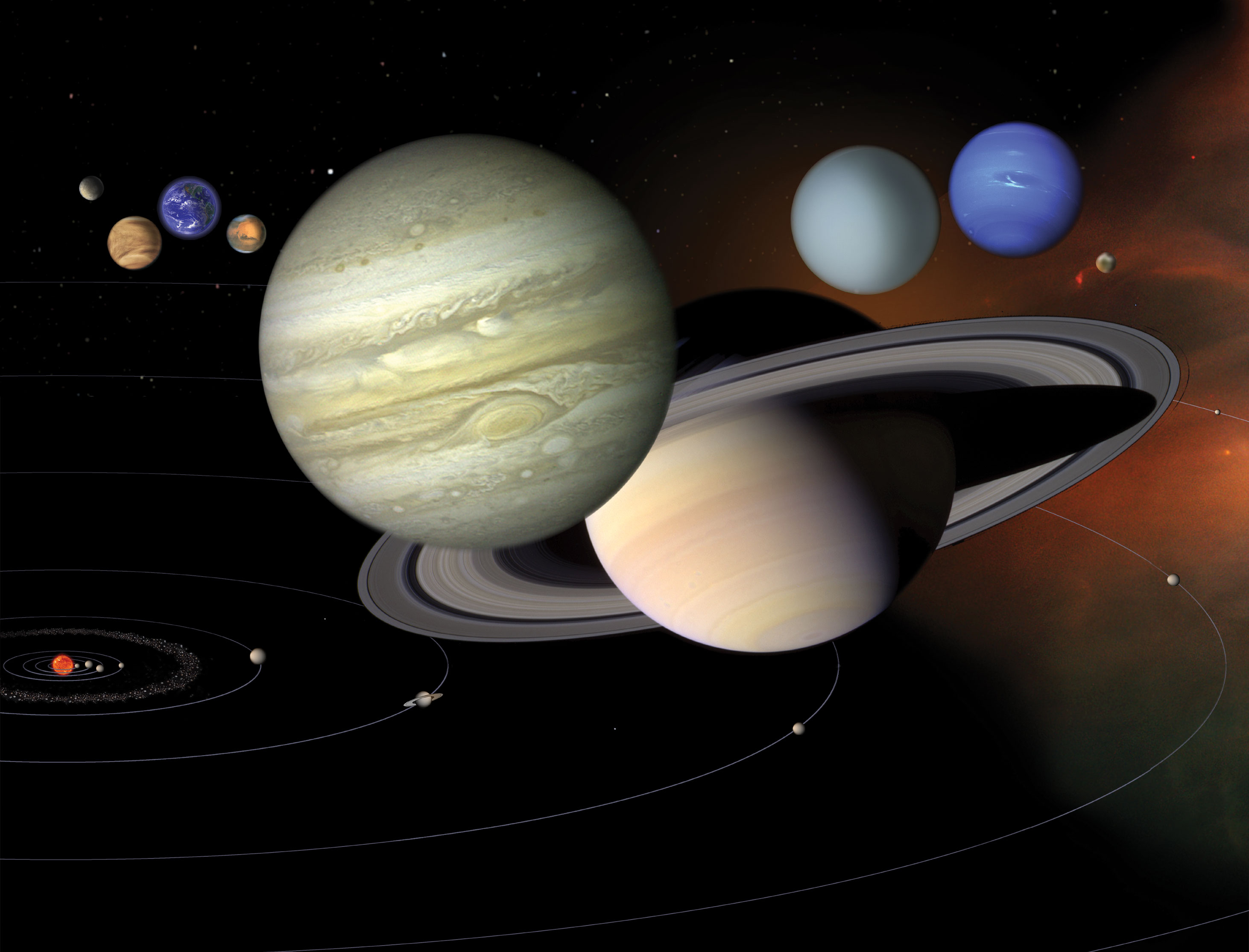This is the final part of a three-part series in which NASA Aeronautics’ senior writer Jim Banke tells his newborn grandson, Axel, the story about how two recently concluded research projects will help achieve a long-held vision for the future of aviation. In part one and part two, Axel heard about the goals and achievements of the UAS in the NAS project. The story continues…
Axel, it’s time to start wrapping up my story about NASA’s aeronautical innovators and their trailblazing research. Although you’re still wide awake, it’s getting late, and your parents are going to get mad at me if I don’t get you back in your crib soon.
So now we flash back to late 2013, two years after the Unmanned Aircraft Systems in the National Airspace System (UAS in the NAS) project, had started.
It’s just after Thanksgiving and Amazon releases a video on YouTube that reveals its plans to soon use small drones to deliver packages to people’s doorstep.
“That took everybody like… whoa, that is crazy!”
That’s how Parimal Kopardekar, or “PK,” described how he heard the aviation community reacting to the idea of a company with no aviation experience planning to introduce a brand-new air transportation system to the world. And to do it fast.
Today PK is director of the NASA Aeronautical Research Institute, but back then he was a project manager within the Airspace Operations and Safety Program, which was and still is home to NASA’s air traffic management systems research.
PK found his thoughts nearly taken over by visions of solving how hundreds of these small drones could make thousands of flights every day over major city areas – like Amazon proposed – and do it safely.
There were so many unknowns: How do you manage all those drones flying low over a city? How do you keep them from colliding with buildings or each other? How would you handle emergency situations, especially if the pilots can’t see the drones they are flying?
PK knew there was no way the Federal Aviation Administration (FAA) – or any other air navigation service provider in the world – could deal with this volume the same way it’s done today. You couldn’t hire and equip enough controllers without making the system collapse beneath its own weight.
Challenge Accepted
But PK was sure he had the answer. It would be called the UAS Traffic Management system, or UTM, and he had refined his thoughts enough to write and file a patent.
Spoiler alert: The patent – officially called “Unmanned Aerial System Traffic Management to Enable Civilian Low Altitude Goods and Service Delivery by UAS” – was granted in 2019, and in 2020 was awarded the Government Invention of the Year.
That should tell you how successful the project was during its five years.
The basic idea behind UTM was to provide an automated network that would manage flights of drones below 400 feet.
Drone operators would tell the UTM system where they wanted to fly, and the system would check to make sure the plan was safe and there would be no conflicts with other scheduled traffic.
It involved a lot of automation and a lot of different systems electronically talking to each other with minimal human involvement. Drone operators could schedule deliveries using a website or even an app.
This would be very different from the way the current system works where pilots who are required to stay in contact with air traffic controllers must get permission every time they want to change their course or altitude.
In its place, information about where every aircraft is in the sky at any time would be digitally communicated across the UTM system, creating what PK called a “share and care environment.”
Companies certified by the FAA would use this network to supply air traffic management services. Instead of a management by permission philosophy, UTM would feature a management by exception mindset. Pilots would only be told what not to do.
Understandably, the FAA was hesitant to embrace the concepts behind UTM at first. Aviation is the safest method of travel for a reason. Change must happen only after every effort is made to ensure safety won’t be affected, and that can take time.
To test the waters, PK conducted a small workshop in 2014 with representatives from industry – Google, Amazon, and others – to talk about his ideas. Industry’s positive response gave NASA the confidence to take the next step.
In 2015 NASA officially began the UTM project with PK as its first manager. To help kick things off, the project hosted a three-day conference open to anyone interested in this new area of drone operations.
A few hundred were expected. More than 1,200 people showed up. The fact that attendance at that UTM convention was so huge sent a loud and clear signal to all concerned about the future. This was a big deal.
That “Jetsons” future I dreamed of seemed more possible than ever.
Industry was on board and anxious to get started. The FAA also realized something big was happening. NASA was in an ideal position to lead and serve as a facilitator of sorts as new standards and procedures were developed for UTM and did so.
PK explained the situation to me like this:
“One of the things I liked to say was we were too fast for the FAA and too slow for industry. But after that 2015 workshop, things radically changed. Everybody started to accept it. UTM was the best way to safely accommodate small drones.”
Axel, remember all those acronyms from part two of the story? DAA, C2, and MOPS? Well in its own way, the UTM project had to work through the same concerns related to DAA and C2 the UAS in the NAS project studied.
And like before, these new MOPS written for the smaller drones at lower altitudes would be sent on to the FAA to consider for adoption.
The challenge: UTM participants couldn’t use the same DAA and C2 equipment developed for the UAS in the NAS because they were too big and too heavy. UTM’s smaller drones – with their size, weight, and power limitations – required a fresh look at how to safely deal with those concerns.
Capable Technology
To test technologies needed for UTM, NASA conducted a series of four increasingly complex field demonstrations between 2015 and 2019. They were known as Technical Capability Levels, or TCL.
TCL-1 kept things very basic. Each drone had its own pilot, who kept the drone in sight as it flew within a controlled test site. How these small drones might be used in firefighting or surveying farmland was demonstrated.
TCL-2 saw drones flying over sparsely populated areas beyond where its pilots could see them. Technologies that enabled the drones to react to changing conditions or emergencies, such as the loss of a radio link between the pilot and drone, were tested.
TCL-3 saw coordinated test flights of drones at six different locations across the country. Here the emphasis was on maintaining safe distances from other aircraft, whether they were part of the test or not.
TCL-4 was the UTM project’s big finish, its final exam.
For this activity, several drones were flown using UTM-related technologies and procedures over areas of larger cities, namely Reno, Nevada, and Corpus Christi, Texas. Package delivery and emergency response were among the tasks demonstrated.
Altogether, NASA brought together and collaborated with more than 100 representatives of industry, academia, and public agency partners – with the FAA at the top of the list. Together, they showed that a highly automated air traffic management system for drones that doesn’t rely on human air traffic controllers could safely work.
PK said the project owes its success to those partnerships.
Finishing the Story: Dreams to Reality
Axel, I can’t stress enough how important the work done by both projects will be to those who are continuing to conduct research to enable this future of aviation that reminds me of the Jetsons – what we call Advanced Air Mobility, or AAM.
In talking with PK, Lee, and others who worked on these projects, the common conclusion they share is that there’d be an even bigger use for the idea that became UTM – and that’s AAM.
AAM is a solution NASA and its partners are working on to safely manage all aircraft sizes flying at every altitude, not just small drones flying below 400 feet.
Based on what was developed for UTM, a system of service suppliers will digitally connect everyone, so every flight knows where it is in relation to nearby flights and when it is safe to fly.
Doing it that way might be the only solution as demand for air travel increases and air traffic control functions become more automated, all of which will expand the amount of digital data exchanged between the ground and the cockpit.
Ron Johnson, the UTM project manager when it ended, told me the UTM system has shown it can be grown along with the growth in air traffic. It might not look the same in the future, but something very much like it is the answer to eventually replacing the current system.
We still have a way to go to realize the full vision of flying cars taking you to work each day, or having a pizza delivered by drone. But the technology and the rules needed to enable those possibilities are beginning to take shape.
We’ve already seen the FAA host its own UTM-related demonstration activities, as well as take some of the standards and procedures written for them to consider and officially turn them into new capabilities offered to the drone community.
The prime example of this is LAANC, the Low Altitude Authorization and Notification Capability – something the FAA describes as a collaboration between the FAA and industry that directly supports UAS integration into the airspace.
LAANC basically works just as the UTM project envisioned and demonstrated through its TCL’s. An operator wishing to fly their small drone below 400 feet in controlled airspace around an airport can get authorization to fly by connecting to LAANC through an official UAS Service Supplier, or USS.
Ron told me LAANC is a very basic first step toward a more capable and comprehensive UTM system of the future. He also said the UTM concept is being embraced by nations around the world, from Austria to New Zealand, allowing US companies to compete on a global basis providing UTM services.
The FAA also has drafted, with NASA’s help, a concept of operations for using a UTM system for aircraft flying above 60,000 feet – higher than today’s commercial airliners fly – but it is not operational yet.
As cool as all that is, it’s only the start.
There’s still plenty of work to do, plenty of learning to be done. It will
involve a lot of good people within NASA and among its many partners and collaborators who care about your future. And everyone else’s too.
It won’t be long until you’re old enough to have pizza, so here’s a promise. The first one delivered to your house by drone is on me. Yes, we can make it half and half – half pepperoni for you (like your sister likes it), half sausage and sauerkraut for me.
And that’s the end of the story. For now.
Now it’s time to close your eyes and go to sleep, Axel. Sweet dreams of the future of flight. I love you.


























